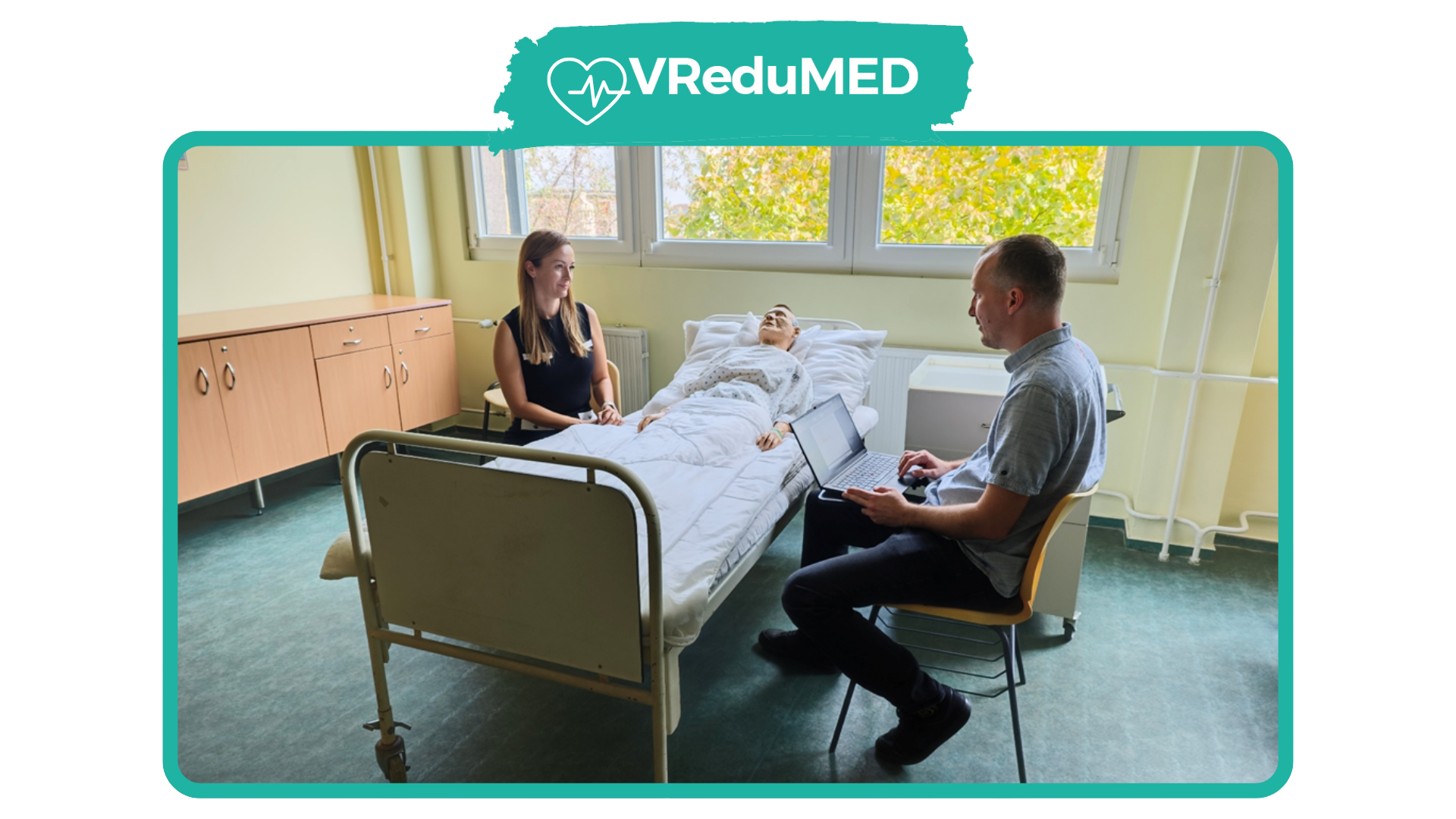Széchenyi István University (SZE) in Győr, together with its affiliated training and research centers, educates nearly 13.000 students from over 60 countries. The Faculty of Health and Sports Sciences offers highly practice-oriented programs for registered nurses, midwives, health advisors supporting expectant and new parents, and health managers. Depending on the chosen field of study, students can earn either a Bachelor’s or a Master’s degree.
In postgraduate education, Master’s programs in Health Psychology, Sonography, Healthcare Manager and Midwife are already available, as well as an additional English-language training program in Health Management (Bachelor’s and Master’s). A doctoral school is currently in preparation.
The current situation of healthcare education in Hungary is complex, shaped by expanding training opportunities, modernization efforts, and significant structural challenges. More detailed information can be found in this summary.
For Dr. Sánta, nursing is not merely a profession, but a true calling. In Hungary, the greatest challenges in nursing are staff shortages, working conditions, and inadequate remuneration — all of which make it increasingly difficult to persuade trainees to enter the profession, even if they are spared night shifts during their studies.
Currently, Dr. Sánta sees language barriers, difficulties in communication, and lack of motivation as the biggest challenges in working with students. After all, mastering the terminology is challenging even in someone’s first language. The profession’s negative image, the large number of patients — especially due to an aging society —, the wide range of responsibilities, and a constant sense of being overwhelmed create anxiety among trainees. Under such conditions, it is difficult to keep students engaged both during training and later in the profession.
Potentials and reservations surrounding new technologies
When it comes to new technologies, the nursing sector tends to be quite sceptical and often expresses concerns. In particular, the use of VR is viewed critically, as the absence of sensory, tactile, and haptic feedback makes it difficult to imagine applications that would genuinely enhance nursing education.
Dr. Sánta sees potential for Virtual and Augmented Reality in nursing education, particularly for method training and communication exercises, such as patient history-taking and mood assessment. She also highlights the potential value of process-oriented scenarios for practicing procedures and workflows — for example, connecting and monitoring life-support equipment. Applications for blood-draw training would be especially valuable if appropriate haptic feedback were available.
According to Dr. Sánta, VR offers particularly high potential for training in risk situations, such as scenarios in hazardous environments (e.g., industrial sites or nuclear power plants) during preclinical care, where work must be carried out under unknown conditions. Other possible applications include training for stressful situations when caring for infants, young children, and pregnant women, as well as for polytrauma patients—up to and including highly demanding scenarios where trainees are confronted with deceased patients and must respond appropriately.
For trainees in particular, VR applications could be valuable by allowing them to experience situations from the perspective of a visually impaired person or a patient under the influence of alcohol or drugs.
According to Dr. Sánta, the greatest challenges in implementing VR in educational institutions are limited financial resources and the need to overcome scepticism and reservations among both trainers and students. A key issue is the lack of awareness about the possibilities of VR, which should be addressed through targeted training for both instructors and learners.
VR scenarios as new learning environments can provide added value primarily because they can be repeated as often as needed. This makes it possible, for example, to conduct training sessions with patients of different ages, with varied medical histories, or with random polytrauma injuries. Such learning environments could serve as a substitute for trained instructors, particularly in first-aid education.
When asked about the concrete use of VR at her faculty, Dr. Sánta considers VR headsets permanently installed in a laboratory — where students can book time slots for training sessions — practical. Even better, however, would be VR headsets available for loan, provided they are accompanied by an introduction from a trainer to ensure correct handling and operation.
When asked about the practical use of VR at her faculty, Dr. Sánta considers VR headsets permanently installed in a laboratory — where students can book time slots for training — to be a practical solution. An even better option, she suggests, would be to allow students to borrow the headsets, as long as they first receive instructions from a trainer to ensure proper handling and use.
The vision for the future: Fully immersive VR
For both trainers and students, integrated support features or tutorials are essential when using VR headsets and applications. VR scenarios for nursing education should be designed to last no longer than 10 minutes per session and include automated evaluation and feedback through the app. Recording each participant’s scores and knowledge level would further support the trainers.
For Dr. Sánta, the ideal application of VR in future nursing education would be a program that allows trainees to simulate working across different hospital departments and to experience the entire chain of emergency care — from finding the patient on site, transporting them by ambulance, admitting them to the emergency room, providing care there, and finally transferring them into a hospital bed. In the best-case scenario, this “VR application of the future” would create a near-perfect illusion for trainee paramedics, including sensory elements such as touch (feeling muscle tone, temperature, and skin moisture) and even smell.
More information: Széchenyi István University – Faculty of Health and Sport Sciences
© Széchenyi István Egyetem
In conversation: Dr. Emese Sánta and Dr. PhD Tamás Budai
